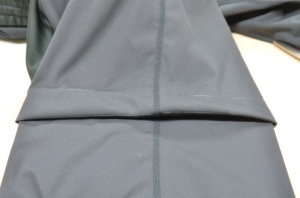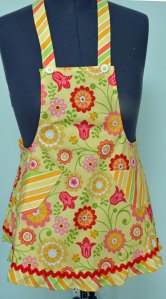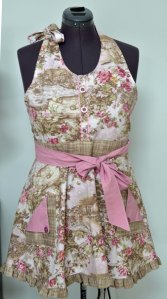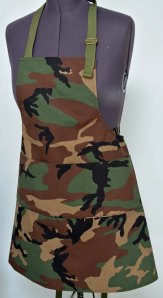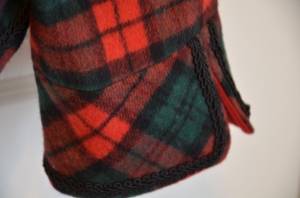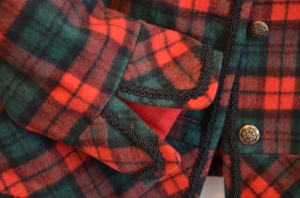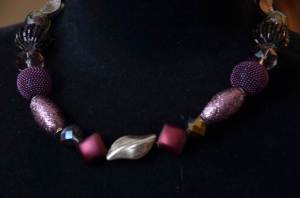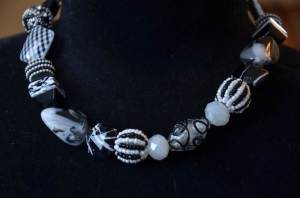Many sport pants have zippers or other treatments at the hem line, making it very difficult to shorten the pants to fit – so much so, that many people don’t buy the pants they want. Here’s a simple method to shorten sports pants, which will work for men, women and children.
Here are running pants with far too much length.
To establish how much the pants need to be taken
up, find a spot above the zipper, and pinch the fabric until the hem is pulled
up to where you want it. Make sure you wear your sports shoes when you do this.
Mark the pinch with a pin that goes through both
layers of fabric. The entire pinched
section of fabric is above the zipper, but still below your knee. This is the section we’re going to sew out.
Here’s how the pant leg looks with the pinched fabric. I tried to keep it relatively low on the pant leg, just a couple of inches above the zipper, so about mid-calf.
I measured from the edge of the fold to the pin
position – it shows 1 ½” which means the total amount I’m taking up is 3”.
Then I measured from the existing hemline to the
pin mark, which measured at 11”. That
means my stitching line will be at 11”, the fold line for stitching will be at
12 ½”.
With the pants now inside out, I mark 3 measurements from the existing hemline:
11”, which is where the stitching line will show on the outside
12 ½” which is where the fabric will be folded back on itself for stitching
14” which is the other stitching line once the fabric is folded. This identifies how much of the fabric is being taken up – in my case it is 3”.
The 3 lines – I marked them with tailor’s chalk
all around the leg. This makes it easier
to ensure a straight seam line and consistent length of the pant leg.
Using the 12 ½” line as your guide, slide the
hemline end of the pant leg back inside the pant leg (remember your pants are
inside out), which puts the right sides of the pant together, folded at the 12 ½”
line. The 14” and 11” lines will line up. Stitch on the 14” line as shown.
Here’s the stitched line on the inside of the
pants. It could be trimmed and serged or
zig-zagged to remove the bulk, or it can be left in case you think you’ll ever
pass the pants on to someone else.
Here’s how the seam looks on the outside. Many sport pants have these vertical seams as
style lines.
You can apply this method of shortening to many sport pants, although you might need to think a bit more about where the seam should be on form-fitting running pants. Keep it on your calf – if it’s above the knee there’s always a chance it will chafe your skin.
This same approach can also be used to shorten sleeves on sports jackets, or even shirts that have a shaped or fitted hem.









